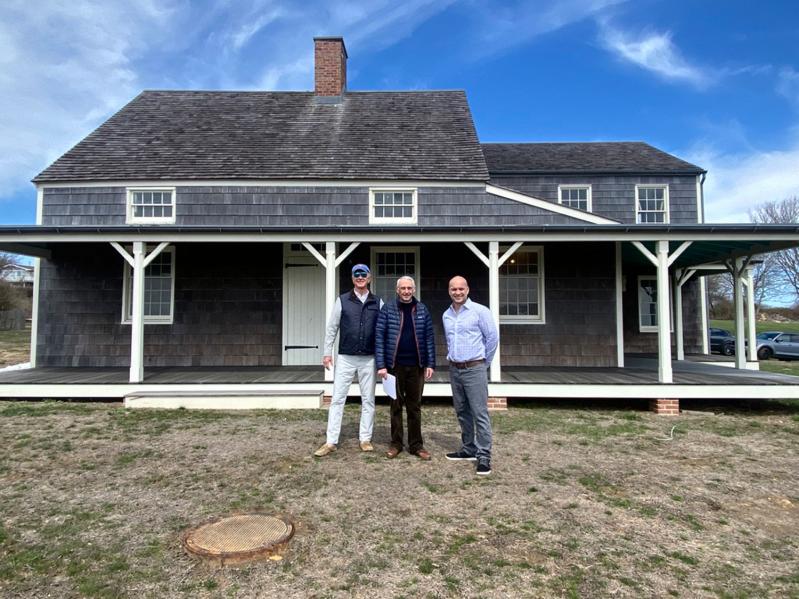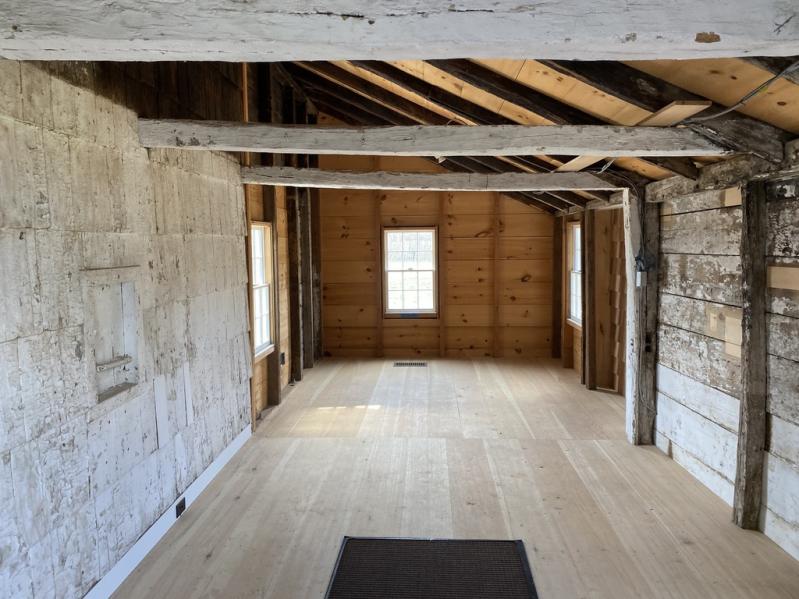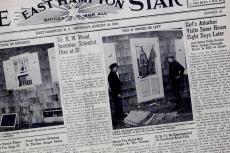After being closed to the public for more than a decade and with a yearslong renovation project deemed complete, Second House in Montauk, originally built in 1746 and replaced in 1797 following a fire, will soon reopen to the public. A ribbon-cutting ceremony will be scheduled, and a photographic exhibition is set to open on May 23.
East Hampton Town Councilman David Lys told the Montauk Citizens Advisory Committee on April 7 that the restoration was finished, a third and final phase having focused on the structure’s interior. The interior renovations followed a first phase devoted to foundational support in 2018 and 2019, during which the 1912 east addition was removed as were the front porch and dormers, and a second focusing on the building’s exterior, completed in 2022 and comprising the removal of cladding, siding, and some gables as well as exterior restoration including new siding, roofing, and restoration and replication of doors and windows. It also included reconstruction of the structure’s historic porch.
The town and the New York State Historical Trust purchased the property in 1968 from the David Kennedy family, which had acquired it early in the 20th century and used it as a summer residence. Second House opened as a museum in 1969 under the Montauk Historical Society’s management, but due to its dilapidated condition has been closed in recent years.
Originally built to house the keeper who tended sheep to the west and cattle to the east when Montauk was pastureland, Second House’s 1797 replacement happened when the town allotted “three gallons of rum to raise the house at Fort Pond,” according to town trustee records. Further alterations were made to the structure in 1879, 1880, and 1912.
Robert Hefner, a historic preservation consultant to the town, had prepared a report in 2016 which said that in its present state, Second House more closely resembled an early-20th-century summer cottage than the residence of livestock keepers it had been in the 18th and 19th centuries. Its timber frame had deteriorated, wiring and plumbing were obsolete, and an infestation of raccoons and other animals in the attic and cellar rendered the attic inaccessible and the interior air unpleasant.
Mr. Hefner’s report recommended restoration to its appearance in 1886, when the last keeper employed by the proprietors of Montauk departed. In 2017, the town retained him and DB Engineering to prepare a statement of work and plans to restore the structure to its late 1880s appearance.
“Working in collaboration with the Montauk Historical Society, we developed a schedule of rooms,” Mr. Lys told the citizens advisory committee, meaning that “every room was not restored perfectly. Some rooms were left exposed, meaning you go into the pantry and you’ll see, like, seven layers of wallpapering in there, because that’s just how the house ‘grew up’ over the years.” Elsewhere, salt marsh hay used for insulation is visible.
As part of the interior renovation, workers including inmates supervised by the Suffolk County Sheriff’s Department “started taking, bit by bit, the Kennedy-era stuff off from the inside to see what was behind it,” Mr. Hefner said during a site visit on Monday. “It was incredible. The whole thing sort of revealed itself. There’s all these layers of wallpaper — that’s all being left here, just as a patina of age and to show how things evolved.” Soot still blackens a wall above where a stove had stood. An elevator that had been installed was removed, he said.
A room on the building’s second story, which Mr. Hefner said had been several small rooms from its prior use as an inn, was initially planned to be an office and meeting room for the historical society, prior to the town’s 2021 acquisition of the Carl Fisher House. It offers stunning views of the Atlantic Ocean, Kirk Park and, beyond it, Fort Pond.
Second House is one of the first structures motorists entering the town’s easternmost hamlet see. Coupled with the recent removal of utility poles on Montauk Highway near the intersection of Second House Road, the now-unobstructed vista of sea, sky, and land affords visitors the opportunity to “step back in time a little bit,” Mr. Lys observed on Monday. But “it’s also great to see the inside, because if you just do the outside of a building, people forget about the inside. I thought Bob and Drew [Bennett, of DB Engineering] did a great job keeping the contractors on task.”
Mr. Hefner is “a local treasure,” agreed Joe Gaviola, president of the Montauk Historical Society. The society will hire docents for tours of Second House upon its reopening to the public, he said, years after it was closed for the renovation project. Summer craft fairs on the grounds, which continued during the building’s closure, will resume this year as well.
The museum of Native American artifacts, on the grounds of Second House, remains closed but will reopen, Mr. Gaviola said. “We’re waiting on additional guidance from the federal government on how to interpret their artifacts and how best to handle that, so we’re putting it on pause right now. We had an amazing gift from a family out here — we’ve got $225,000 toward this. When we finally do restore it and further interpret it, we’ll be able to do some amazing things.”
The exhibition opening next month at Second House will feature images from “Ditch: Montauk, New York, 11954,” a book of photographs by Nat Ward. “We were thinking about how to make [Second House] more of a cultural center, to use the historic house for broader purposes,” said Mia Certic, the society’s executive director. “We had the fantastic opportunity to show these unbelievable photographs, panoramic photographs of the beach taken recently.” The photographs, she said, “are stunning. They really look timeless.”





